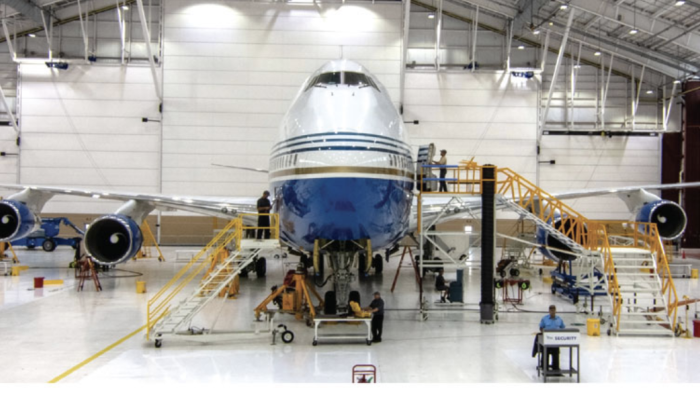One of the most expensive consumable items on an aircraft is becoming less expensive to operate. Hydro-Aire, a part of Crane Aerospace & Electronics, has signed a licensing agreement with Dunlop Aerospace’s aviation braking systems division of Coventry, England, for braking system software designed to increase aircraft brake life significantly. Hydro-Aire is a Burbank, Calif.-based company that manufactures aircraft antiskid, brake control and autobrake systems.
According to Greg Ward, president of Crane Aerospace & Electronics’ aerospace group, approximately 70 percent of aircraft carbon brake wear takes place during ground taxi since carbon brakes have inherently good wear characteristics during high-speed landings. The Taxi Select Braking system employs software logic that, with each brake-pedal application, alternately applies brake pads during taxi operations. However, the dynamics of steel wear make the system inappropriate for aircraft with steel brakes.
Ron Winkler, Hydro-Aire’s director of business development for landing-gear systems, told AIN that his company manufactures the majority of brake-control systems on aircraft with carbon brakes. Further, he said, the new braking-system software involves only a slight modification to the existing Hydro-Aire brake-control unit.
“The software is easily incorporated into the brake-control unit of aircraft using our carbon-brake system,” Winkler said. “We’re currently in the airline market, where our Taxi Select Braking is offered for retrofit or as an option on new aircraft. The Boeing 777 already uses the system, and it would definitely apply to corporate aviation, too.”
Business jets with at least four mainwheels and carbon brakes, such as the Global Express and other higher-end aircraft, are definite candidates, according to Winkler. “At the moment, we’re not in discussions with any of the business aviation OEMs, but we welcome the possibility,” he said. “Each aircraft has to be type certified, so we’d have to work with them directly. The end cost to the user is estimated to be minimal, though it hasn’t been determined at this time. But remember, it requires only a software change.”
Using a four-mainwheel example, the left outboard tire is wheel #1, the left inboard wheel is #2, the right inboard wheel is #3 and the right outboard wheel is #4. The first time the pilot depresses the brake pedals, the brakes on only wheels #1 and #4 are activated. The next time the pedals are depressed the software activates only the brakes of wheels #2 and #3. Each application alternates brake activation.
“Obviously, this reduces braking effectiveness by 50 percent, which is why it is activated only during taxi,” Winkler explained. “Carbon brakes are expensive, and this will reduce carbon heat-pack operating expense by at least 50 percent and potentially as much as 70 percent. We’re doing testing now to determine the exact savings percentage. This is an inexpensive way to reduce brake operating cost significantly. Frankly, we’re disappointed we didn’t think of this ourselves before Dunlop did. It’s a great idea.”







